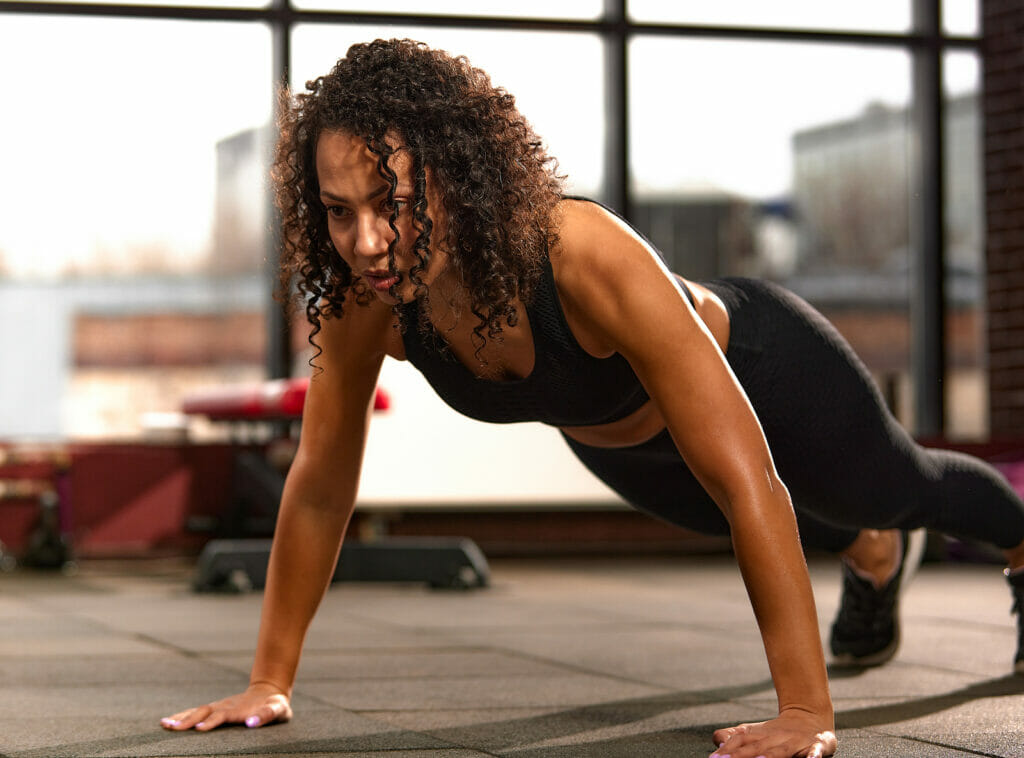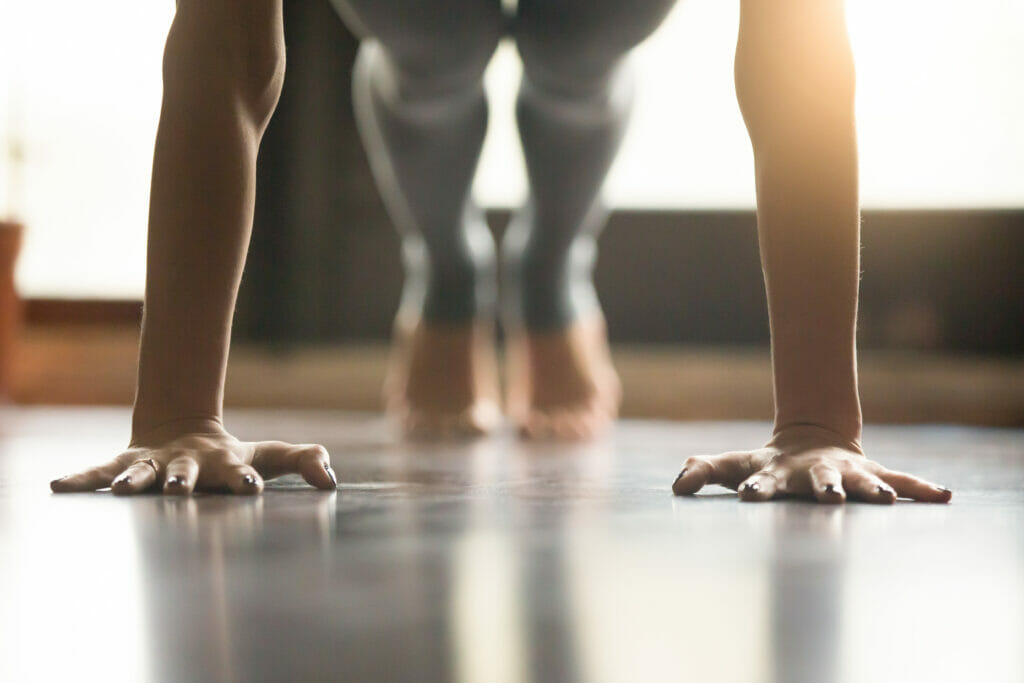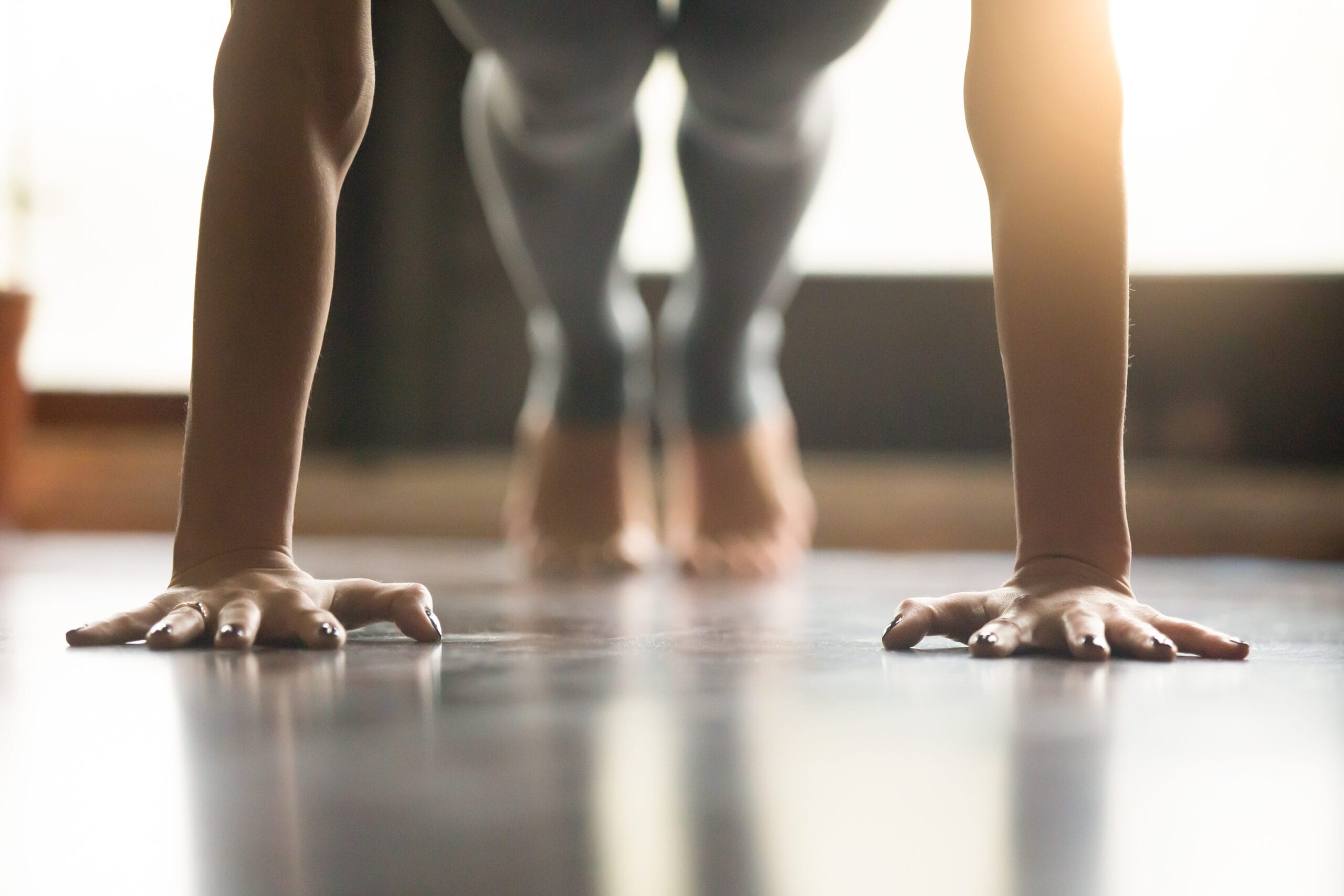
At The Home Gym, I’m often talking about different home gyms or other pieces of fitness equipment, but that doesn’t mean you need a bunch of equipment to stay fit in your own home.
Nope, bodyweight exercises, aka “calisthenics” can be highly effective and they offer the added benefit of not requiring a lot of bulky equipment.
So, if you don’t have the room or budget to invest in strength training equipment (or you’re simply looking to switch up your routine), calisthenics is definitely worth trying.
But like any other workout routine, you need to know what you’re doing and have a game plan before you start because the last thing you wanna do is waste your time.
Well, if you’re exercising at all, I’d argue you aren’t wasting your time because if you ask me, any exercise is better than no exercise…
But I think you know what I mean.
In this guide, I’ll go over some of the basics you need to know in order to start creating your own calisthenics workouts from home.
I’ll also go over some of the key moves you’ll want to include into your routines to make sure you’re getting a well-rounded, full body workout.
After reading, you’ll be ready to get rolling with your new workouts.
Let’s start from the beginning.
Calisthenics 101
I realize the term “calisthenics” might give you nightmares about your middle school PE class, but there’s nothing scary or complicated about it.
“Calisthenics” simply refers to a form of strength training that uses your bodyweight as the resistance – that’s it.
You’ve likely been doing calisthenics in one form or another your entire life – if you’ve ever taken a PE class in school you certainly have.
Push ups, pull-ups, sit-ups… all calisthenic exercises.
This form of exercise has been around for a long time and was even used by the Ancient Greeks and Chinese to improve health and prepare soldiers for battle.
Calisthenics is often associated with gymnastics as well, where athletes spend a lot of time manipulating their bodies and holding positions for extended periods of time.
Most of gymnastics definitely falls under the broad scope of calisthenics, as these athletes are using their body weight to become incredibly strong, but that doesn’t mean you have to look like a gymnast to start a calisthenic program.
Yup, everyone has to start somewhere and when it comes to these bodyweight exercises, there are a lot of ways to adapt to your current fitness level.
And if you stick with it, who knows – you might just find yourself crushing some of those advanced, gymnastic-like moves.

But Is Calisthenics Effective?
Uh, have you ever seen an elite gymnast?
Gymnasts are some of the strongest athletes around and they spend a lot of time doing calisthenic exercises.
So yes, calisthenics can be incredibly effective at building strength and increasing muscle tone, but like any other exercise program, it all depends on what you put into it.
Like any other strength training program, you have to make sure you’re gradually increasing the load to ensure you’re continuing to stress the muscles enough to adapt.
Recall that strength gains and muscle growth happen when the muscles are challenged to the point where they actually develop micro-tears in the fibers and it’s the repair of these fibers that leads to the muscle growing larger.
But our bodies are smart and they can rapidly adapt to the stresses being put on them – this means the resistance that challenged you 2 weeks ago might not be enough to get the job done now.
This is where progressive overloading comes in.
This basically refers to the process of gradually making your workouts harder to ensure you’re still challenging your muscles enough to grow.
When you’re lifting weights, this can mean things like increasing the weight, reps, or sets being used for different exercises, but it can also mean decreasing rest times or using different exercise combinations to begin with.
Well, with calisthenics, your bodyweight is the resistance and it’s unlikely you’re going to be able to gain enough weight fast enough to use sheer bodyweight as your mode of overloading.
(And gaining all that extra weight would likely defeat the purpose of exercising in the first place).
Luckily, with calisthenics, there are different ways to make your bodyweight exercises more challenging.
Depending on your skill level, this could mean simply increasing reps or sets, but eventually you’ll need to progress the exercises you’re performing.
And there are a lot of different ways to progress these bodyweight exercises.
But let’s start out with a quick review of some of the core calisthenic moves you’ll want to incorporate into your workouts.
Essential Moves
There are a ton of bodyweight exercises you can pull from and by all means, choose which ever exercise you prefer.
But if you’re looking to build a balanced physique, you’ll want to make sure you’re working your upper body, lower body, and core evenly.
Here are some of the essential calisthenic exercises you can use to ensure you’re doing just that:
Push Ups
The push up is a classic bodyweight strengthening exercise that never goes out of style.
Not only does this exercise target your chest, shoulders, and triceps, but it can be done anywhere and it can be adapted to fit anyone’s fitness level.
If you aren’t ready for a full floor push up, you can start with wall push ups, counter push ups, or on your knees on the floor.
Pull Ups
The pull up is basically the opposite of the push up, but it’s just as good.
The classic pull up hits pretty much every muscle in your back, as well as your elbow flexors and it can help improve grip strength too if you focus on squeezing the bar.
It’s easily one of the best strengthening exercises out there, but it’s also one of the most challenging – a lot of folks have a hard time with this one.
Personally, I used to enjoy doing pull ups, but over the years I’ve had so many issues with tendonitis in my elbows that it’s become easier for me to just avoid them all together.
But there are ways to adapt this exercise to make it easier for beginners or people with achy joints like me.
You can start off with horizontal pull ups or assisted pull ups and work up from there.
Either way, when it comes to calisthenics, they’re truly one of the essential moves.
Squats
Squats are the quintessential leg strengthening exercise because they pretty much hit every muscle from the waste down.
They target your glutes and quads, but they do get your hamstrings and adductors involved some too.
And like push ups, you can do this exercise anywhere you have room to stand.
With calisthenics you won’t be adding any external resistance with your squats, but you can make this exercise more challenging by increasing your depth, doing isometric holds, pulsing, or even working toward the dreaded pistol squat.
Dips
Another great upper body strengthening move, dips really hit your triceps, shoulders, and chest.
And even though they’re historically done with a set of parallel bars/handles, you can adapt depending on what equipment you have at your disposal.
Dips can be done off the edge of a chair, a workout bench, or even the floor and for the truly gifted, you can really make ’em harder by doing them with gymnastic rings.
Planks
The plank is for your core, what squats are for your legs – they get just about everything in there working at the same time, including both your spinal flexors and extensors.
Planks are great because they can be done anywhere and they’re generally safe to do since they’re isometric and don’t involve any bending of the spine.
And they can be adapted in all kinds of ways – they can be done against a wall, counter, floor, on toes, on knees, etc.
You can also do side planks and planks of other varieties to really keep things fresh.
Lunges
I kinda hate lunges, but they’re still a great bodyweight exercise and they’re right up there with squats when it comes to their effectiveness at improving leg strength.
With lunges, you’re hitting each leg individually, meaning you have to do 2 moves for each rep and this can really get your heart rate up.
Lunges come in a lot of different varieties, so you have a bunch of options to choose from with this one.
Personally, I like back lunges more than any of the other varieties, but walking lunges aren’t too bad either.
Starting A New Home Routine
Ok, we’ve gone over what calisthenics are and discussed a few of the key moves involved in this type of workout regimen, but how do you get started?
Well, that’s a good question.
There are plenty of options here, but if you’re looking for a simple plan, I would encourage you to start with the following blueprint:
- 1 pushing exercise
- 1 pulling exercise
- 1 leg exercise
- 1 core exercise
If you’re a beginner, the pushing exercise should be what ever variation of the push up you feel comfortable with and the pulling move should be a pull up/chin up of one variation or another.
The leg exercise should be a squat or lunge, whatever feels more comfortable.
And the classic plank would work well for the core exercise.
When it comes to reps, a good goal would be able to work up to 20 quality push ups and 10 good quality pull ups – when you’re able to reach these milestones, then I would start thinking of adapting the moves to make them more challenging.
Squats tend to be a little easier, so starting out with 20-25 bodyweight squats might be effective, but lunges tend to be harder, so 10 – 15 on each side might get the job done initially.
And with planks, I like to use time.
Aim for 30 seconds if you’re new to planks and work yourself up to being able to hold a good plank for 60 seconds.
When 60 seconds becomes doable, it’s time to make it harder (you can definitely continue holding planks for longer than 60 seconds, but personally, I get bored).
If you’re only doing 4 exercises, 3 sets of each could be a good place to start.
If doing this, this sample workout would look like:
- 3 x 20 push ups
- 3 x 10 pull ups
- 3 x 20 squats
- 3 x 60 sec planks
Looking at this workout on paper, it doesn’t look like much, but I can tell you that doing 3 sets of 20 push ups and 3 sets of 10 pull ups is going to be hard for a lot of folks… myself included.
And again, a lot of us are going to have to work our way up to these kinds of numbers on pull ups and that’s ok – keep in mind there are tons of ways to adapt these exercises to our current fitness levels.
Adapt as much as necessary and be patient with your self and wait until you can perform 10 quality pull ups (or 20 push ups) before you start progressing these moves and making them harder.
You need a good base skill level before trying some of the more advanced moves.
But just in case you’re curious…
Advanced Calisthenic Moves
These moves certainly aren’t for beginners who aren’t familiar with calisthenics, but if you put the work and stay consistent, you might find yourself progressing and being ready for some of these advanced exercises.
Don’t even think about asking me how to work your way up to these moves because I wouldn’t have a clue – and no, I can’t do any of these exercises myself either.
But it’s still cool to see what these elite athletes are capable of and there are progressions you can follow to learn these skills yourself.
Muscle Ups
You’ll see Cross Fitters doing this advanced move often and it’s basically a pull up on steroids.
Instead of stopping with getting your head over the bar (which is hard enough for a lot of us), with a muscle up, you pull your entire body over the bar, finishing with your elbows extended and the bar below you.
Planche
The planche is a classic gymnastics move and it takes a lot of work to build up the strength and technique necessary to achieve this one.
But if you’ve got the determination and will, I say go for it.
Front Lever
After looking at the planche, the front lever might sound a little more doable, but it’s still tough.
For this exercise, you’re basically holding yourself in the horizontal pull up position… but without the floor supporting your feet.
Good luck.
Back Lever
This exercise if very similar to the front lever mentioned above, but with this one, you’re facing the ground and holding the bar behind your back.
This just looks painful… my shoulders hurt just watching.
Human Flag
Nope.
Final Thoughts
There are some very gifted people out there – it’s amazing what people can do.
I hope you found the advanced moves entertaining and as awe-inspiring as I do, but that’s nothing compared to what some of these professional calisthenic athletes can do.
Incredible stuff.
But all these pros had to start somewhere and that means building up the base of core strength necessary to build upon and master these more advanced exercises.
If you’re looking to join the calisthenic movement, or just looking to switch up your strength training routine, using bodyweight exercises is a great way to go.
These exercises can easily be done from home because they don’t require a ton of space and most don’t require much equipment.
And a lot of ’em are actually pretty safe to do, especially when compared to lifting weighted barbells.
There are a lot of different ways to start your own home routine, so don’t feel like you have to strictly abide by the example I gave earlier.
When putting your routine together, just make sure you include pulling and pushing moves for your upper body, as well as dedicated leg and core strengthening exercises to make sure you get a full body workout.
I didn’t mention this earlier, but you could also split your workouts with calisthenics, just like a lot of people do with weights (pushing and legs on one day, pulling and core on another, etc.).
Just remember to master the essentials before trying to skip forward to the more advanced stuff.
I hope you found this guide helpful and if you have any questions, comments, or suggestions for starting a calisthenic workout from home, please leave ’em below and I’ll get back to you shortly.


